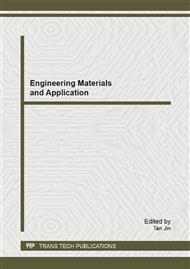p.148
p.154
p.159
p.163
p.168
p.174
p.181
p.187
p.193
Strength and Permeation Properties of Slag Blended Fly Ash Based Geopolymer Concrete
Abstract:
Geopolymer is a binder that can act as an alternative of Portland cement. Geopolymers use by-product substances such as fly ash, and can help reduce carbon dioxide emission of concrete production. This paper presents the results of a study on the fly ash based geopolymer concrete suitable for curing at ambient temperature. To activate the fly ash, a combination of sodium hydroxide and sodium silicate solutions was used. The setting and hardening of geopolymer concrete were obtained by blending blast furnace slag with fly ash instead of using heat curing. Ground granulated blast furnace slag (GGBFS) was used at the rate of 10% or 20 % of the total binder. The tests conducted include compressive strength, tensile strength, flexure strength, sorptivity and volume of permeable voids (VPV) test. The geopolymer concrete compressive strength at 28 days varied from 27 to 47 MPa. Results indicated that the strength increased and water absorption decreased with the increase of the slag content in the geopolymer concrete. In general, blending of slag with fly ash in geopolymer concrete improved strength and permeation properties when cured in ambient temperature.
Info:
Periodical:
Pages:
168-173
Citation:
Online since:
January 2013
Authors:
Keywords:
Price:
Сopyright:
© 2013 Trans Tech Publications Ltd. All Rights Reserved
Share:
Citation:


